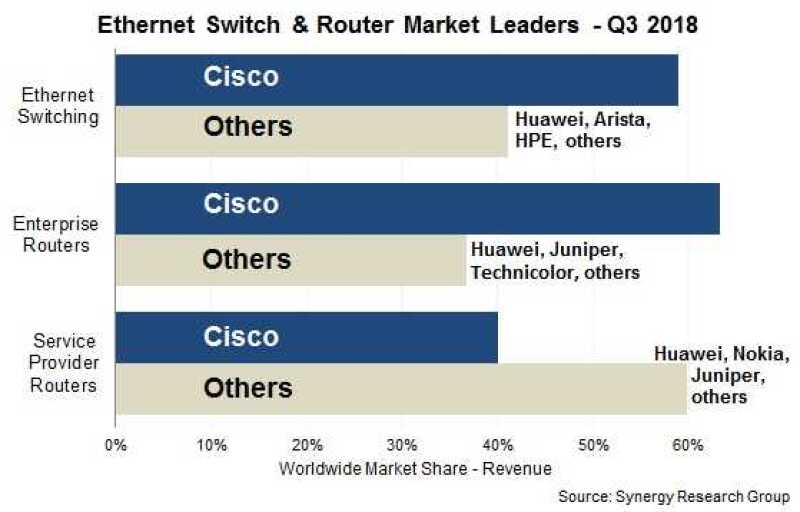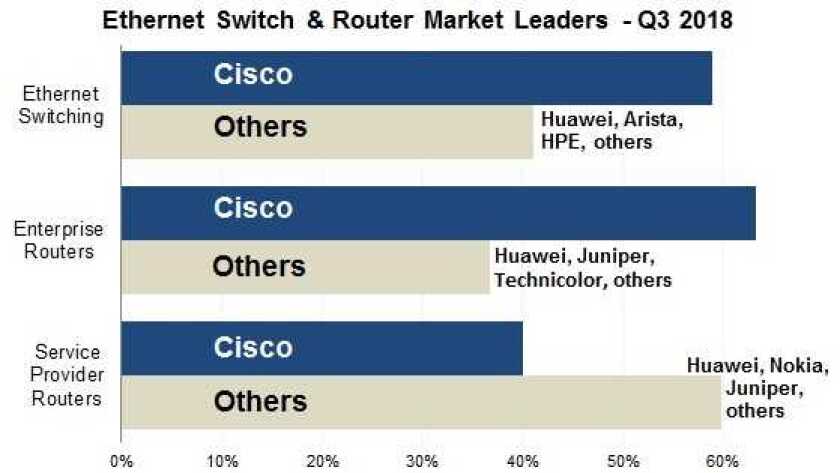Quarterly revenues for the global market topped $11 billion higher than any previous quarter, despite the fact that it has only been growing by an average of 1% annually.
“Despite challenges from SDN, NFV and hyperscalers’ own-design networking gear, the market for Ethernet switches and routers is huge and continues to grow, albeit slowly,” said John Dinsdale, a chief analyst at Synergy Research Group.
Cisco has the largest share of the switch and router market holding approximately 53%, the highest it has been since 2016. Across individual segments, this amounted to 63% for enterprise routers and 40% for service provider routers. For the last four quarters in total Cisco’s market share was 50%, two percentage points down from the previous four quarters.
Just behind Cisco the ranking of vendors varied according to each of the three main segments but in total Cisco is followed by Huawei, Juniper, Nokia, Arista Networks and HPE – whose overall switch and router market shares were in the 4-11% range in Q3. After this there is then a long line of other vendors, with H3C and Extreme being the most prominent challengers.

“While Arista is the high-growth star and Huawei continues to consolidate its number two ranking in the market, the biggest story is Cisco’s ability to continue controlling over half of the market. It had a particularly strong quarter and no other vendor is seriously challenging its position,” said Dinsdale.
Global switching and router revenues were well over $11 billion in Q3 and totalled $43 billion for last four quarters, representing 1% growth on a rolling annualised basis. Of the three segments Ethernet switching is the largest accounting for almost 60% of the total and it is also the segment that has the highest growth rate, accelerated by aggressive growth in the deployment of 100GbE and 25GbE switches.
Regionally, North America remained the biggest region throughout Q3 accounting for almost 40% of worldwide revenues, followed by APAC, EMEA and Latin America. Conversely, the APAC region has been the fastest growing, as was the case again in Q3, with growth driven in part by spending in China, which has benefitted Huawei.






